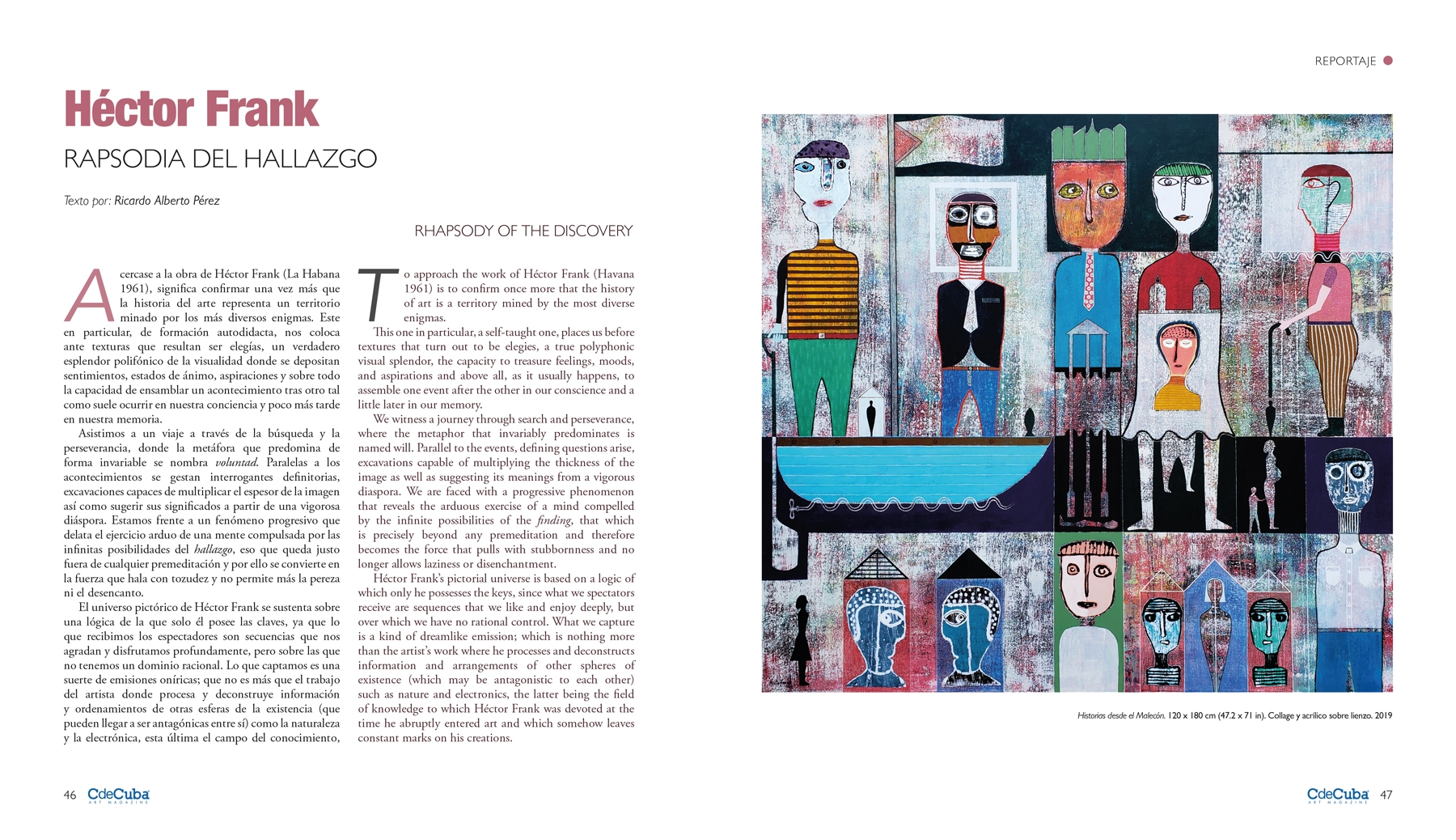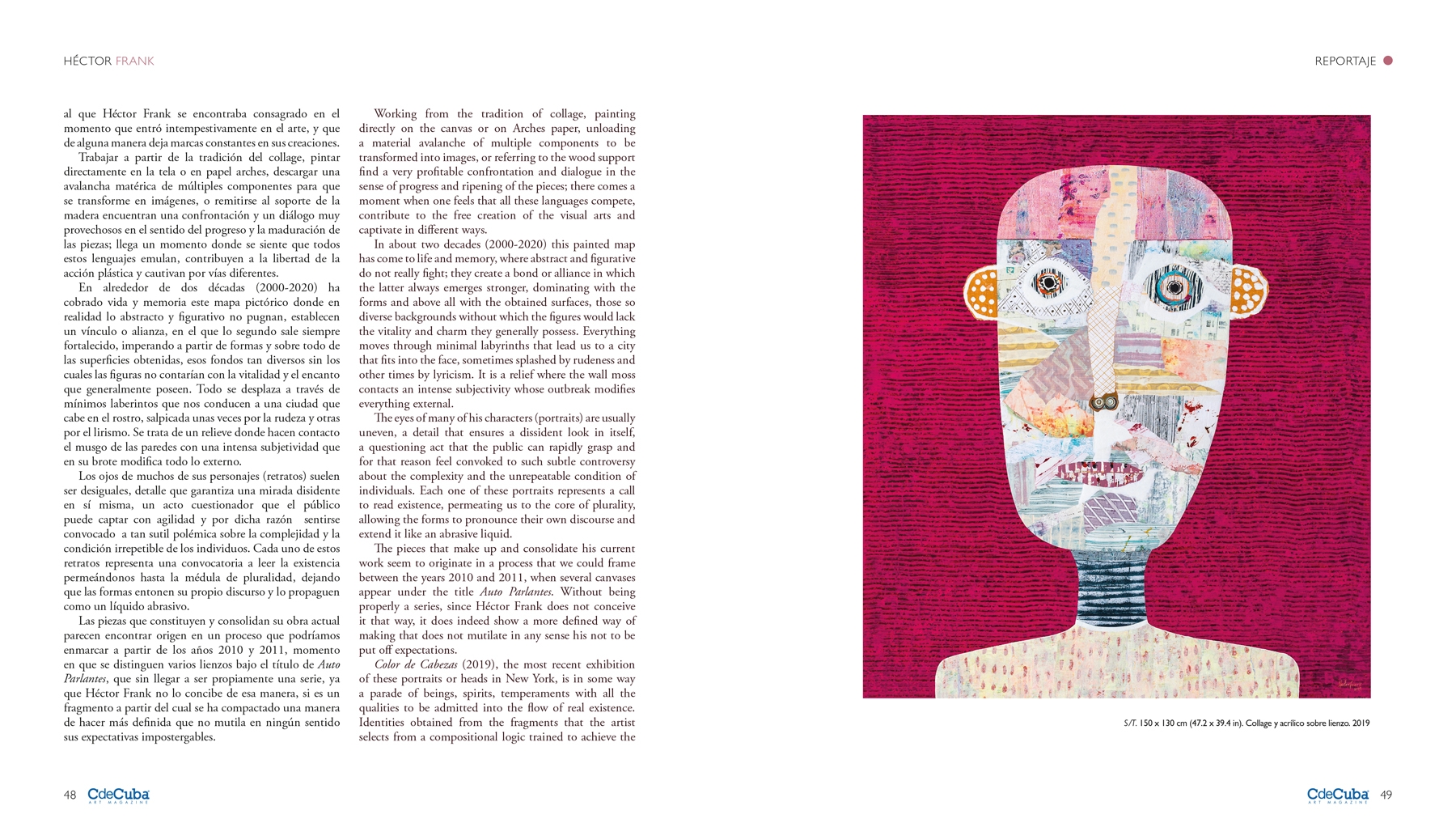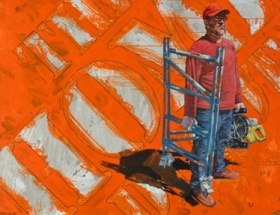To approach the work of Héctor Frank (Havana 1961) is to confirm once more that the history of art is a territory mined by the most diverse enigmas. This one in particular, a self-taught one, places us before textures that turn out to be elegies, a true polyphonic visual splendor, the capacity to treasure feelings, moods, and aspirations and above all, as it usually happens, to assemble one event after the other in our conscience and a little later in our memory.
We witness a journey through search and perseverance, where the metaphor that invariably predominates is named will. Parallel to the events, defining questions arise, excavations capable of multiplying the thickness of the image as well as suggesting its meanings from a vigorous diaspora. We are faced with a progressive phenomenon that reveals the arduous exercise of a mind compelled by the infinite possibilities of the finding, that which is precisely beyond any premeditation and therefore becomes the force that pulls with stubbornness and no longer allows laziness or disenchantment.
Héctor Frank’s pictorial universe is based on a logic of which only he possesses the keys, since what we spectators receive are sequences that we like and enjoy deeply, but over which we have no rational control. What we capture is a kind of dreamlike emission; which is nothing more than the artist’s work where he processes and deconstructs information and arrangements of other spheres of existence (which may be antagonistic to each other) such as nature and electronics, the latter being the field of knowledge to which Héctor Frank was devoted at the time he abruptly entered art and which somehow leaves constant marks on his creations.
Working from the tradition of collage, painting directly on the canvas or on Arches paper, unloading a material avalanche of multiple components to be transformed into images, or referring to the wood support find a very profitable confrontation and dialogue in the sense of progress and ripening of the pieces; there comes a moment when one feels that all these languages compete, contribute to the free creation of the visual arts and captivate in different ways.
In about two decades (2000-2020) this painted map has come to life and memory, where abstract and figurative do not really fight; they create a bond or alliance in which the latter always emerges stronger, dominating with the forms and above all with the obtained surfaces, those so diverse backgrounds without which the figures would lack the vitality and charm they generally possess. Everything moves through minimal labyrinths that lead us to a city that fits into the face, sometimes splashed by rudeness and other times by lyricism. It is a relief where the wall moss contacts an intense subjectivity whose outbreak modifies everything external.
The eyes of many of his characters (portraits) are usually uneven, a detail that ensures a dissident look in itself, a questioning act that the public can rapidly grasp and for that reason feel convoked to such subtle controversy about the complexity and the unrepeatable condition of individuals. Each one of these portraits represents a call to read existence, permeating us to the core of plurality, allowing the forms to pronounce their own discourse and extend it like an abrasive liquid.
The pieces that make up and consolidate his current work seem to originate in a process that we could frame between the years 2010 and 2011, when several canvases appear under the title Auto Parlantes. Without being properly a series, since Héctor Frank does not conceive it that way, it does indeed show a more defined way of making that does not mutilate in any sense his not to be put off expectations.
Color de Cabezas (2019), the most recent exhibition of these portraits or heads in New York, is in some way a parade of beings, spirits, temperaments with all the qualities to be admitted into the flow of real existence. Identities obtained from the fragments that the artist selects from a compositional logic trained to achieve the charm of expression.
The narrative piece Stories from the Malecón (2019) stands out in this set. Unraveling the symbolic relationship between the elements that make it up is essential to enjoy it in all its magnitude. Here we are left with the elegance and skill of telling a drama through color, dividing up facts and indicating fractures; and in the end, our expectations become true with the voice we hear as a result of what the image distills among so many exiles, summoning us back to the sea.






